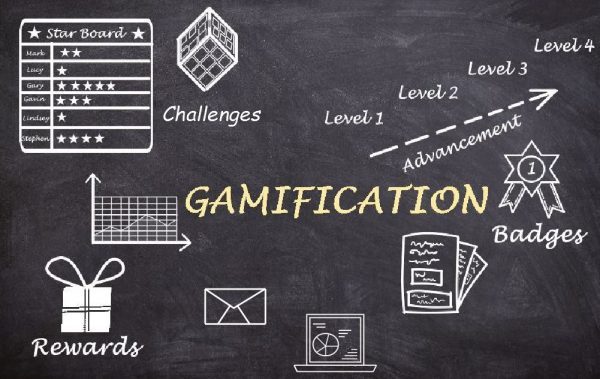One of the skillsets that content area literacy teachers can cultivate is the ability to differentiate and individualize a learning experience for a specific student. Teachers carry out this process when a student does not grasp a concept when first introduced to it. Maybe the concept was too abstract for the student to understand the first time, maybe they were absent for a part of the class period, maybe they did not understand the vocabulary terms being applied, maybe the pace of the learning experience was too fast, or maybe – something else. Knowing why a student had a tough time with comprehension and application is important so that you can design an additional learning experience and opportunity for the student to show you what they know.
Instructions
This week, we were to design an intervention plan or new learning experience for a focus student. This focus student did not understand what we taught in last week’s lesson, and needs some more support. We were to keep in mind that we are addressing 2 purposes here: literacy skill development and content area/academic language comprehension.
Resources
We were to review the following resources before beginning our assignment as they will inform our work. It was also recommended that we view the Week 1, 2 and 3 Assignment 2 reading materials for ideas and strategies.
Read
- Effective Instruction for Middle School Students with Reading Difficulties
- Classroom Reading Instruction That Supports Struggling Readers: Key Components for Effective Teaching
- Comprehension Lessons for Struggling Middle Grade Readers: A How-To Guide
- Content Area Literacy
- What RTI Means for Content Area Teachers
- Teaching Disciplinary Literacy to Adolescents: Rethinking Content Area Literacy
Design an intervention plan or new learning experience for a focus student of your choice. In this design process you will do the following:
- Identify the focus student
- Share a brief description of the lesson you taught last week
- Share the literacy skill and the content area/academic language elements that were addressed in the lesson from last week
- Create a learning experience for your focus student to: o To learn, practice, and apply the literacy skill addressed in the lesson
- To learn, practice, and apply the new content/academic language information in the lesson
- Design a formative or summative assessment to measure how the focus student performed.
- Design a student-friendly rubric to use with the formative or summative assessment
For this assignment, we could utilize the medium of our choice. We were to think about how we would deliver this new learning experience to our focus student (Google Slides? Video? Cornell Notes? etc.). APA formatting was to be used where possible, and citations were included where necessary.
Focus Student Identification:
The focus student for this intervention plan is Sarah, a 10th-grade student who generally performs well but struggled with last week’s algebra lesson on multi-step inequalities. Sarah is an English Language Learner (ELL) and often requires additional time to understand and apply new vocabulary and concepts. She also has an innate love of horses and likes to ride on weekends.
Description of Last Week’s Lesson:
Last week’s lesson covered multi-step inequalities in algebra. The lesson involved understanding how to solve inequalities that require multiple steps, including distributing, combining like terms, and isolating the variable. Academic language focused on “inequality,” “variable,” “inverse operation,” and “distribute.”
Literacy Skill and Content Area/Academic Language Addressed:
The literacy skill addressed was comprehending and using specific academic vocabulary in the context of solving algebraic inequalities. The content area skill focused on the process of solving multi-step inequalities, which requires understanding and applying a sequence of algebraic steps.
New Learning Experience for Sarah:
To support Sarah, I will design a learning experience that breaks down the concepts into more manageable parts and provides language support.
- Interactive PowerPoint Lesson: I’ll create a short, interactive PowerPoint lesson that revisits the concept of multi-step inequalities. This presentation will include pauses for Sarah to process the information, answer questions, and practice vocabulary. In addition, the video will use examples to make the content more accessible.
- Guided Practice Worksheets: These worksheets will provide step-by-step practice problems. Sarah will be guided through the process of solving each inequality, with prompts to use the correct vocabulary in her explanations.
- Peer Tutoring Session: I will arrange a peer tutoring session where Sarah can work with a classmate who has a thorough grasp of the content. This peer can help Sarah with both language and algebraic concepts.
Assessment Design:
The assessment will be a formative quiz consisting of a series of multi-step inequality problems. The quiz will also include short-answer questions asking Sarah to explain her process of solving the inequalities using key vocabulary.
Student-Friendly Rubric Design:
The assessment rubric will include the following criteria:
- Accuracy: Correctly solving the inequality problems.
- Vocabulary Usage: Appropriate and accurate use of academic language in explanations.
- Problem-Solving Process: Clear demonstration of the steps taken to solve each problem.
- Explanation Clarity: The clarity and coherence of the explanations provided.
Each criterion will be scored on a scale of 1-4, with 1 being needs improvement and 4 being exceeds expectations.
| Criteria | 1 – Needs Improvement | 2 – Developing | 3 – Proficient | 4 – Exceeds Expectations |
| Accuracy | Frequent errors in solving problems | Some errors in solving problems | Most problems are solved correctly | All or nearly all problems are solved correctly |
| Vocabulary Usage | Limited use or incorrect use of academic language | Uses academic language with minor errors | Uses academic language correctly most of the time | Uses academic language correctly and effectively |
| Problem-Solving Process | Steps are missing or incorrect; the process is unclear | Some steps are correct, but some are missing or incorrect | Steps are mostly correct with minor errors | All steps are correct and clearly demonstrated |
| Explanation Clarity | Explanations are unclear or incomplete | Explanations are somewhat clear but lack detail | Explanations are clear with sufficient detail | Explanations are thorough and detailed |
The plan integrates multimedia instructional methods, as Mayer (2009) suggested, emphasizing the effectiveness of visual and verbal explanations in complex subjects like algebra. The interactive PowerPoint lesson in this plan is designed to provide Sarah with multimodal engagement, allowing her to process the information through both visual and auditory means.
The use of bilingual flashcards for vocabulary development is based on research by Carlo et al. (2004), who highlight the importance of direct vocabulary instruction in both the first and second languages for ELL students. This approach will assist Sarah in developing a robust understanding of key academic terms and their application in algebra, enhancing her language skills alongside her content knowledge.
Guided practice, as included in Sarah’s worksheets, draws upon Rosenshine (2012), who found that systematic instruction and scaffolding significantly aid student learning. This structured approach will help Sarah practice and internalize the steps involved in solving multi-step inequalities, providing her with the necessary support to grasp the concept fully.
Including a peer tutoring session aligns with Topping’s (2005) findings on peer tutoring’s effectiveness in enhancing academic achievement. This strategy will offer Sarah additional support and clarification, aiding her comprehension of both language and algebraic concepts in a collaborative learning environment.
The formative assessment approach in Sarah’s plan is supported by Black and Wiliam’s (1998) research, which underscores the importance of formative assessments in improving student learning. This method will help gauge Sarah’s understanding and progress in real-time, providing immediate feedback and adjustment.
Developing a clear, criterion-based rubric for Sarah’s assessment follows Popham’s (1997) advocacy for transparent assessment criteria to enhance student learning. This rubric will give Sarah a clear understanding of expectations and performance areas, facilitating self-assessment and targeted improvement.
Finally, using Google Slides and a blend of digital and physical resources aligns with Zheng et al. (2018), who note the effectiveness of digital tools in supporting diverse learning needs, especially for ELL students. This blend of resources will cater to Sarah’s varied learning preferences and provide an engaging, accessible educational experience.
By integrating these research-backed strategies, the intervention plan for Sarah is grounded in a strong theoretical foundation, ensuring the approaches used are effective and tailored to her specific learning needs as an ELL student in mastering algebraic concepts.
References
Black, P., & Wiliam, D. (1998). Assessment and Classroom Learning. Assessment in Education: Principles, Policy & Practice, 5(1), 7–74.
Carlo, M. S., August, D., McLaughlin, B., Snow, C. E., Dressler, C., Lippman, D. N., Lively, T. J., & White, C. E. (2004). Closing the Gap: Addressing the Vocabulary needs of English-Language Learners in Bilingual and mainstream classrooms. Reading Research Quarterly, 39(2), 188–215.
Mayer, R. E. (2009). Multimedia learning. Cambridge University Press.
Popham, W. J. (1997). What’s wrong—And what’s right—With rubrics. Educational Leadership, 55(2), 72–75.
Rosenshine, B. (2012). Principles of Instruction: Research-based strategies that all teachers should know. American Educator, 36(1), 12–19.
Topping, K. J. (2005). Trends in Peer Learning. Educational Psychology, 25(6), 631–645. https://doi.org/10.1080/01443410500345172
Zheng, B., Warschauer, M., Lin, C.-H., & Chang, C. (2016). Learning in One-to-One Laptop Environments: A Meta-Analysis and Research Synthesis. Review of Educational Research, 86(4), 1052–1084. https://doi.org/10.3102/0034654316628645
Worksheet
| Solving Multi-step Equations and Inequalities Checklist | Solving Multi-step Equations and Inequalities Checklist | ||
| BIG FRACTION Multiply by the denominator on each side | □ | BIG FRACTION Multiply by the denominator on each side | □ |
| DISTRIBUTIVE | □ | DISTRIBUTIVE | □ |
| C.L.T. COMBINE LIKE TERMS □ Combine same variables or numbers- do this to each side | C.L.T. COMBINE LIKE TERMS Combine some variables or numbers- do this to each side | □ | |
| VARIABLE ON BOTH SIDES Move the smaller variable to the other side | □ | VARIABLE ON BOTH SIDES Move the smaller variable to the other side | □ |
| UNDO the+/- | □ | UNDO the+/- | □ |
| UNDO the X/+ | □ | UNDO the X/+ | □ |
| INEQUALITIES | □ | INEQUALITIES | □ |
Presentation













